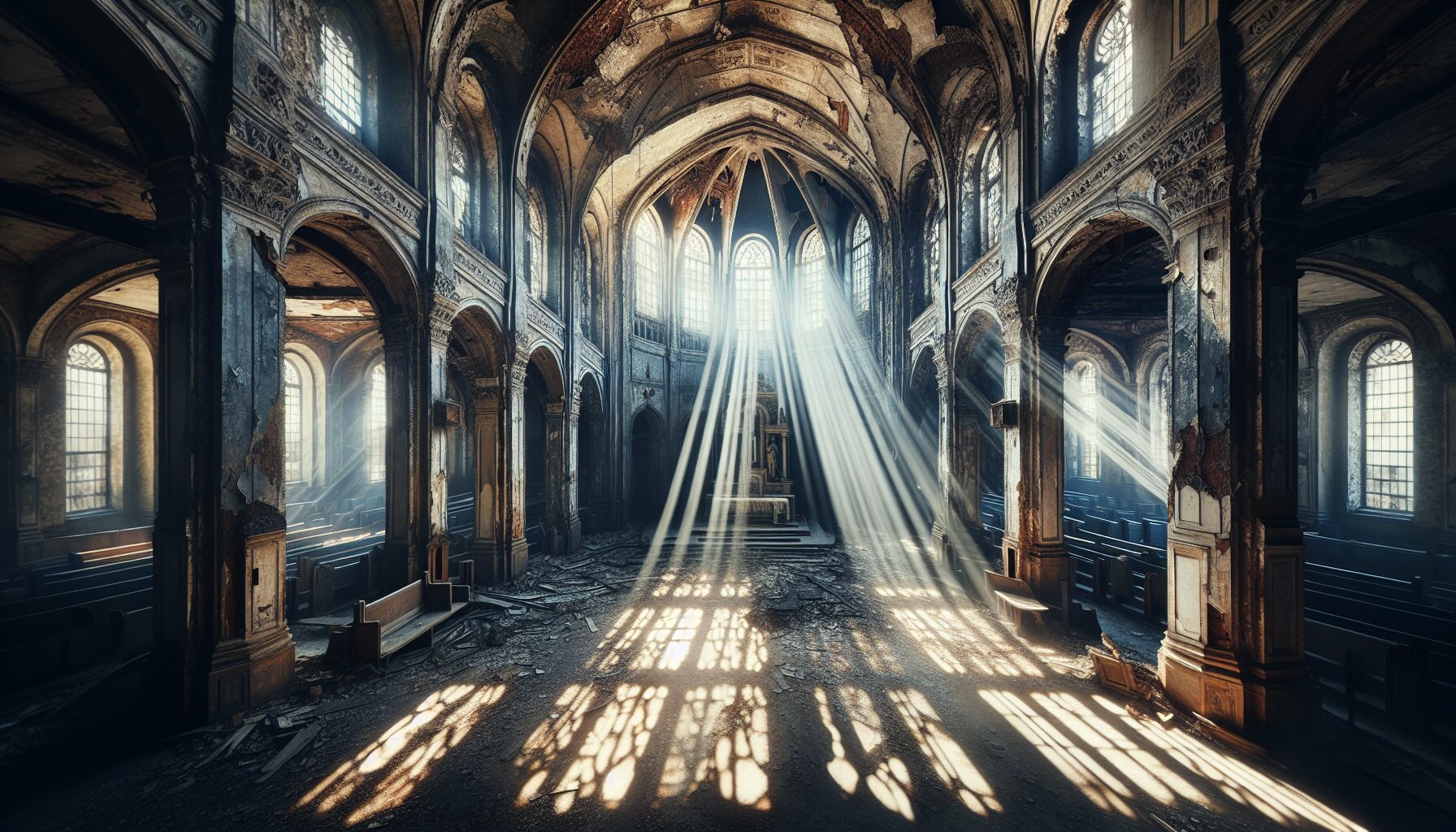Across the world, abandoned sacred spaces stand as haunting, yet beautiful relics of the past. These forgotten churches, temples, and shrines tell stories of communities that once gathered in worship, drawn together by shared beliefs and a common reverence for the divine. While the echoes of sacred chants have faded, these spaces are now filled with a new kind of allure, characterized by silence, decay, and a poetic interplay of light and shadow.
“These abandoned churches, temples, and synagogues form a rich tapestry of architectural and cultural history, where nature and neglect collaborate in poignant serenity.”
— Art Historian Susan Fisher
Many of these buildings, though neglected, continue to captivate photographers, historians, and explorers alike. Here lies the unique aesthetic of impermanence—a reminder of the past’s grandeur reflected in crumbling frescoes and overgrown sanctuaries. As the sunlight filters through broken stained glass windows, it creates a stunning spectacle, transforming dust into specks of life momentarily suspended in mid-air.
The Intersection of Nature and Human Craft
Abandoned sacred spaces illustrate an extraordinary union between natural reclaim and human craftsmanship. Consider the Church of San Rocco in Venice, Italy, now overtaken by lush greenery which weaves itself through the wrought-iron gates and cracks in the walls. Similarly, in the French countryside, the Abbey of Saint-Evroult stands open to the elements, yet somehow retains a sense of its former sanctity.
- Architectural Details: Ornate stonework and delicate tracery adorn these spaces, often surviving the ravages of time and acting as a testament to the artisans’ skills.
- Natural Reclamation: Flora thrives in the humid, shadowed crevices, merging architecture with wilderness.
- Historical Significance: Each site is a living archive, offering insights into historical cultural practices and religious rituals.
A Modern Pilgrimage
For contemporary visitors, exploring these sites often becomes a modern pilgrimage—a journey to experience the profound quiet and contemplative atmosphere that prevails in the absence of active worship. The abandoned church of St. George in the Czech Republic, for instance, with its eerie rows of ghostly statues, serves as both art and reminder of mortality, compelling those who enter to reflect on the larger existential questions.
As these spaces slowly succumb to nature’s embrace, they offer a fleeting opportunity to touch the divine—in the undisturbed tranquility, in the whispers of the past, and in the veins of light that illuminate their sacred corridors.

Comments